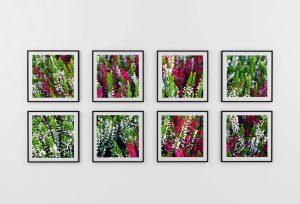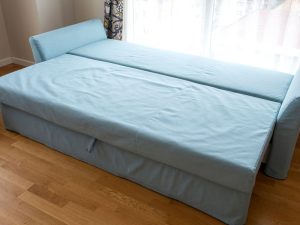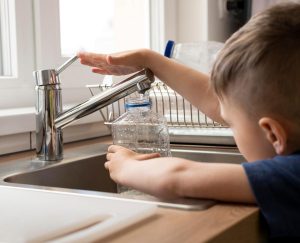Last Updated on February 7, 2024 by teamobn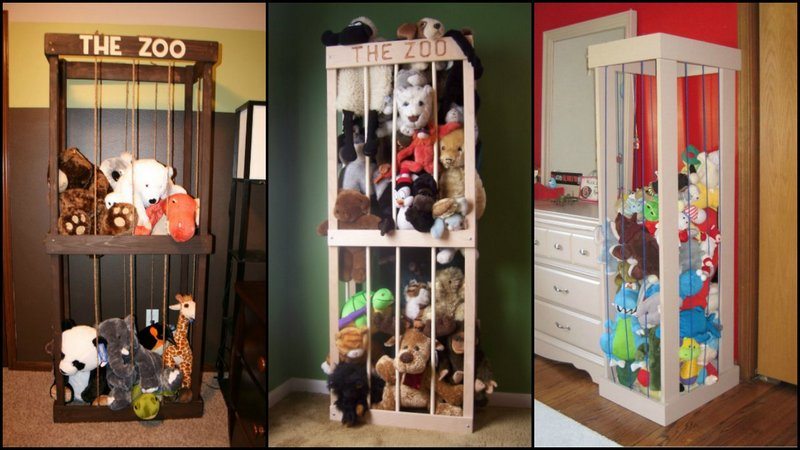
Stuffed toys are great for kids of all ages. They can be used as a cuddle buddy, or as a toy to play with. There are so many different kinds of stuffed animals, that there is sure to be perfect for your child.
Your child will love snuggling up with their new stuffed animal, and you will love knowing that they are safe and comfortable. If you’re a parent, you’ll know how stuffed animal toys seem to both miraculously multiply and migrate to every corner of the house.
They’ll even sometimes make a break for freedom and somehow manage to get as far as the yard! They also have a habit of taking up an enormous amount of space.
But try convincing a child to donate some of those toys and they’ll look at you as though you have three heads. Suddenly, every toy is their ‘favourite’!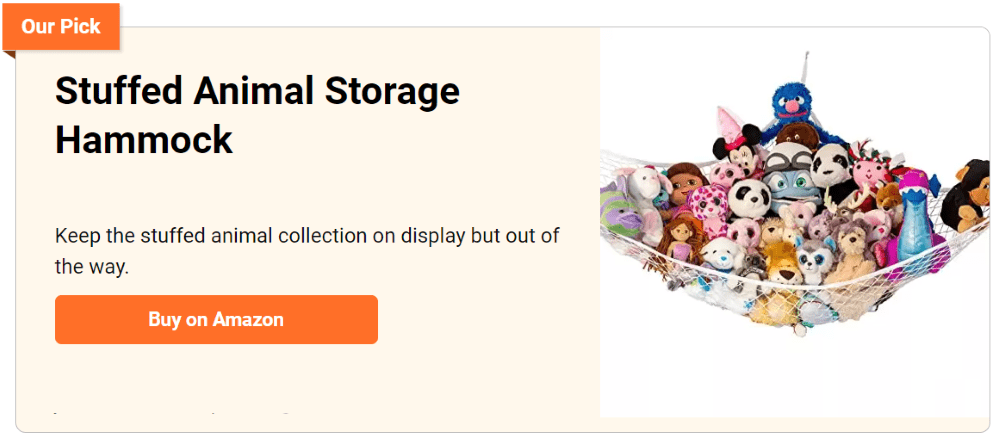
In most houses, floor space is at a premium so a storage system that will allow stuffed toys to be kept vertically makes lots of sense.
Better still, it’s a great way to teach youngsters how to keep things organized so that they always know where to find what they want.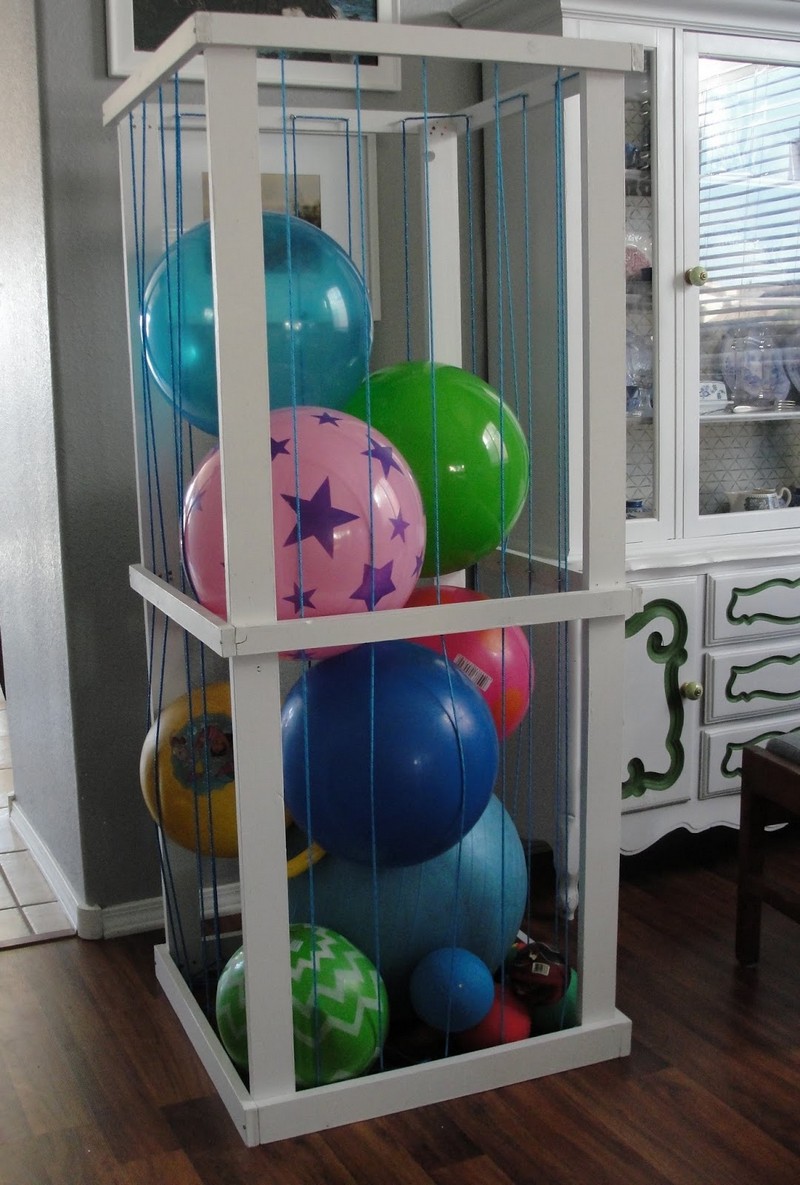
Building a DIY stuffed animal zoo can be a delightful and rewarding endeavour for various reasons. Here are some advantages to consider:
1. Creativity and Customization: One of the primary advantages of creating a DIY stuffed animal zoo is the opportunity for creativity and customization. You can design the zoo layout, select the types of animals to include, and personalize each animal according to your preferences or theme. This process allows for endless possibilities and encourages imagination.
2. Educational Value: A DIY stuffed animal zoo provides an excellent educational opportunity, especially for children. Assembling the zoo can involve learning about different animal species, their habitats, behaviours, and characteristics. Children can gain knowledge about wildlife conservation, animal care, and environmental awareness through hands-on activities.
3. Fine Motor Skills Development: Building a stuffed animal zoo involves various tasks that promote the development of fine motor skills in children and adults alike. From sewing or crafting the animals to constructing enclosures and arranging the zoo layout, individuals can enhance their hand-eye coordination, dexterity, and precision.
4. Bonding Experience: Building a DIY stuffed animal zoo can be a bonding experience for families, friends, or communities. Collaborating on a creative project fosters teamwork, communication, and shared memories. It provides an opportunity for individuals to spend quality time together while engaging in a fun and constructive activity.
5. Cost-Effectiveness: Compared to purchasing pre-made stuffed animals or visiting commercial attractions, building a DIY stuffed animal zoo can be more cost-effective in the long run. By utilizing materials such as fabric scraps, recycled materials, or inexpensive craft supplies, you can create a budget-friendly zoo that offers hours of entertainment.
6. Sustainability and Recycling: Embracing a DIY approach to stuffed animal zoos promotes sustainability and recycling. Instead of discarding old or unwanted clothing, blankets, or fabric remnants, you can repurpose these materials to make stuffed animals and habitat elements. This eco-friendly practice reduces waste and encourages resourcefulness.
7. Promotes Imagination and Play: A DIY stuffed animal zoo stimulates imagination and encourages pretend play, which is beneficial for cognitive development, problem-solving skills, and emotional expression, particularly in children. By role-playing as zookeepers, visitors, or wildlife experts, individuals can immerse themselves in imaginative scenarios and storytelling.
8. Personalized Gifts and Keepsakes: Completed stuffed animal zoos can serve as personalized gifts or keepsakes for loved ones. Whether it’s a birthday present, holiday gift, or memento of a special occasion, a handmade zoo conveys thoughtfulness and creativity. Recipients will appreciate the effort and uniqueness of a DIY creation.
9. Therapeutic Benefits: Engaging in crafting activities like building a stuffed animal zoo can have therapeutic benefits for individuals of all ages. The process of creating can promote relaxation, stress relief, and mindfulness. It provides an outlet for self-expression and allows individuals to focus their attention on a constructive and enjoyable task.
10. Sense of Accomplishment: Completing a DIY stuffed animal zoo project instills a sense of accomplishment and pride in the creators. Whether it’s displaying the finished zoo in a home, school, or community setting, seeing the tangible results of their efforts reinforces confidence and self-esteem. It serves as a reminder of what can be achieved through creativity and determination.
Building a DIY stuffed animal zoo offers numerous advantages, including fostering creativity, providing educational value, developing fine motor skills, facilitating bonding experiences, promoting sustainability, encouraging imagination and play, offering personalized gifts, providing therapeutic benefits, and instilling a sense of accomplishment.
Whether undertaken as a solo project or a collaborative endeavour, building a stuffed animal zoo can be an enriching experience for individuals and groups alike.
Safety, a Top Priority
When designing and building a DIY stuffed animal zoo, safety should always be a top priority, especially if children will be involved in the project. Here are six essential safety precautions to consider:
1. Material Selection: Choose materials that are safe and suitable for the intended age group. Opt for non-toxic, hypoallergenic fabrics and stuffing materials to minimize the risk of allergic reactions or skin irritation. Avoid using small or sharp objects that could pose choking hazards, and ensure that any adhesives or paints used are child-safe and non-toxic.
2. Secure Construction: Ensure that all elements of the stuffed animal zoo, including enclosures, platforms, and accessories, are securely constructed to prevent collapse or tipping. Use sturdy materials and reinforce joints and connections as needed. Check for any sharp edges or protruding parts that could cause injury and smooth them out or cover them with padding.
3. Supervision: Provide adequate supervision, especially when children are involved in the construction or play with the DIY stuffed animal zoo. Monitor their activities to prevent accidents or misuse of materials. Educate them about potential hazards and how to use the zoo safely, including proper handling of stuffed animals and accessories.
4. Age-Appropriate Design: Tailor the design of the stuffed animal zoo to the age and developmental level of the intended users. Avoid small parts or intricate features that may be difficult for young children to manipulate or could pose a choking hazard. Consider incorporating features like soft padding or rounded edges to minimize the risk of injury.
5. Weight Distribution: Pay attention to the weight distribution of the stuffed animals and accessories within the zoo. Ensure that heavier items are securely anchored and distributed evenly to prevent tipping or instability. Consider using weighted bases or securing larger stuffed animals to prevent them from falling over or causing imbalance.
6. Fire Safety: If using electrical components or lighting features in the stuffed animal zoo, follow appropriate safety guidelines to reduce the risk of fire or electrical hazards. Use battery-operated lights or LED bulbs that emit minimal heat, and ensure that wiring is properly insulated and concealed to prevent exposure or damage. Keep flammable materials away from heat sources and electrical outlets.
By following these safety precautions, you can help ensure that your DIY stuffed animal zoo is a safe and enjoyable environment for everyone involved. Regularly inspect the zoo for any signs of wear or damage, and make any necessary repairs or adjustments to maintain its safety and integrity over time.
How to Build a DIY Stuffed Animal Zoo
Stuffed toys are a fun distraction for children. However, they can also be difficult to put away. They fall down onto the floor, get lost, or are placed back into a box incorrectly. These toys may get dirty. A practical solution is to make a toy organizer.
You’ll need these materials:
- 2 pcs of 1x2x8 Lumber
- 4 pcs of 1x3x8 Lumber
- 100 ft Rope
- Primer
- Wood Paint
- Screws
- Screw Eyes
And these tools:
- Saw
- Drill – with a drill bit set
- Sander
Creative Designs for Your DIY Stuffed Animal Zoo
There are various ways we can create a toy organizer, one of these is stuffed toy storage. The stuffed toy storage can also be designed in different ways. Below are the basic designs that reduce space in your bedroom or living area.
1. Long-stand Stuffed Animal Zoo Storage
Now you can shoot those piles of stuffed toys inside the zoo – they won’t be a problem anymore.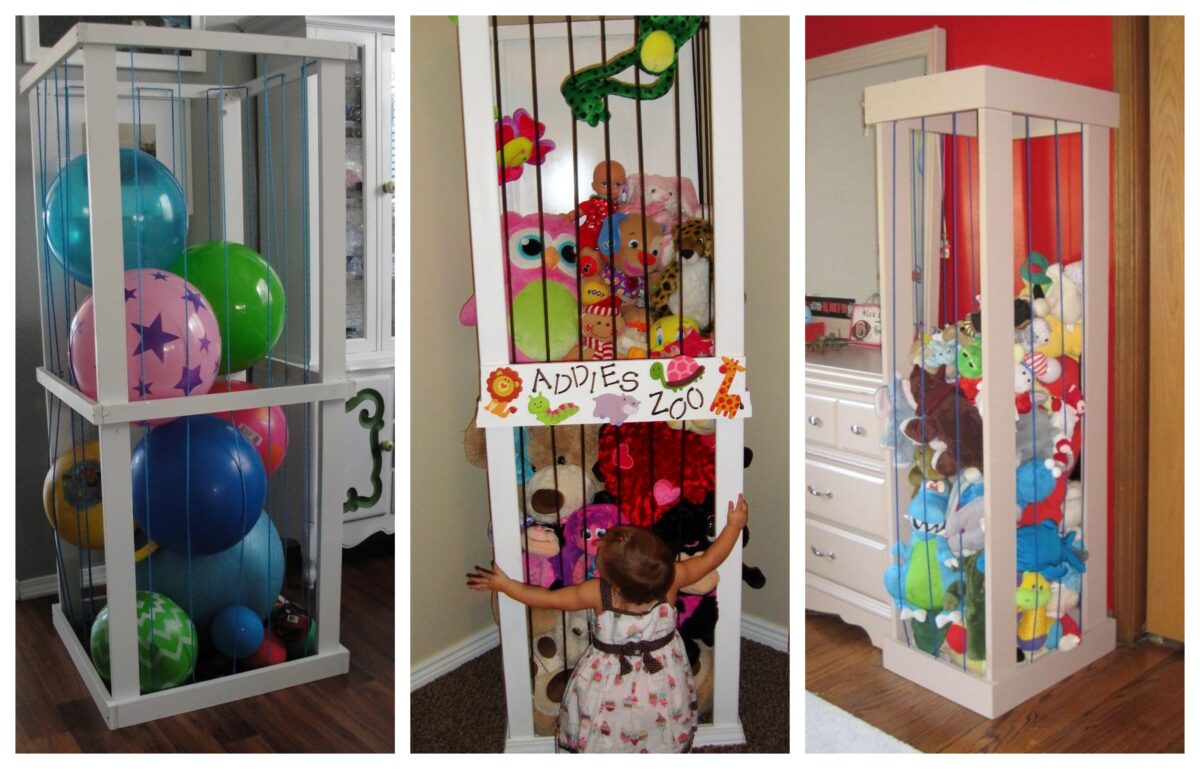
2. Antique-design Stuffed Animal Zoo Storage
Creative toy storage and a very classy design in the living room. Wood has the advantage of being easy to customize. Besides painting them with different colours, you can leave them in their natural wood finish.
3. Triangular-shaped Stuffed Animal Zoo Storage
So that your children will not have to ask you where the toys are, they’ll be in reach. This is especially helpful if all your child’s stuffed animals are too big for the dresser drawer.
With a stroke of ingenuity and a dash of creativity, you transform their play space into a haven of convenience and delight. No longer will your little ones have to search high and low for their favourite cuddly companions; instead, they’ll find them lovingly displayed and readily available whenever the mood strikes.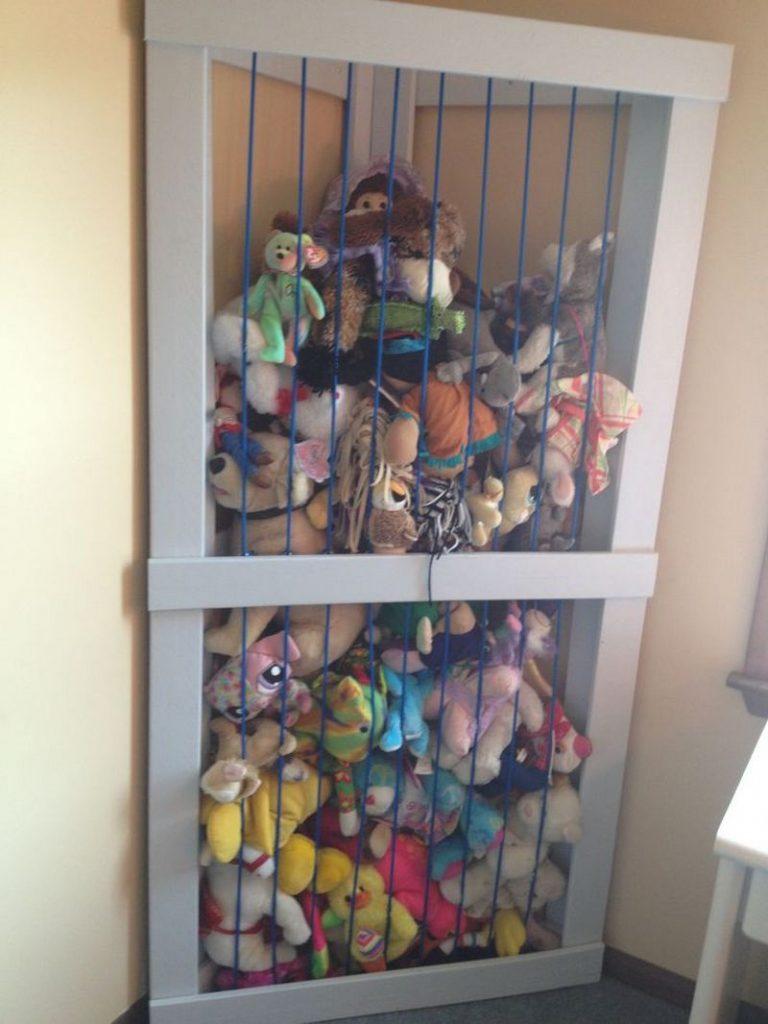
4. Short-cage Animal Zoo Storage
A cute design, ideal for small kids. It’s one of the easiest cages to create since it’s small and you don’t need money to buy it. Make sure it’s not big, so it won’t consume big space in the bedroom.
5. Display-type Animal Zoo Storage
Gives a perfect display in the living room. You can also use it as furniture! This thing is fun because you can decorate it however you like and move it around easily even if it’s small or big. Just take your time and be creative!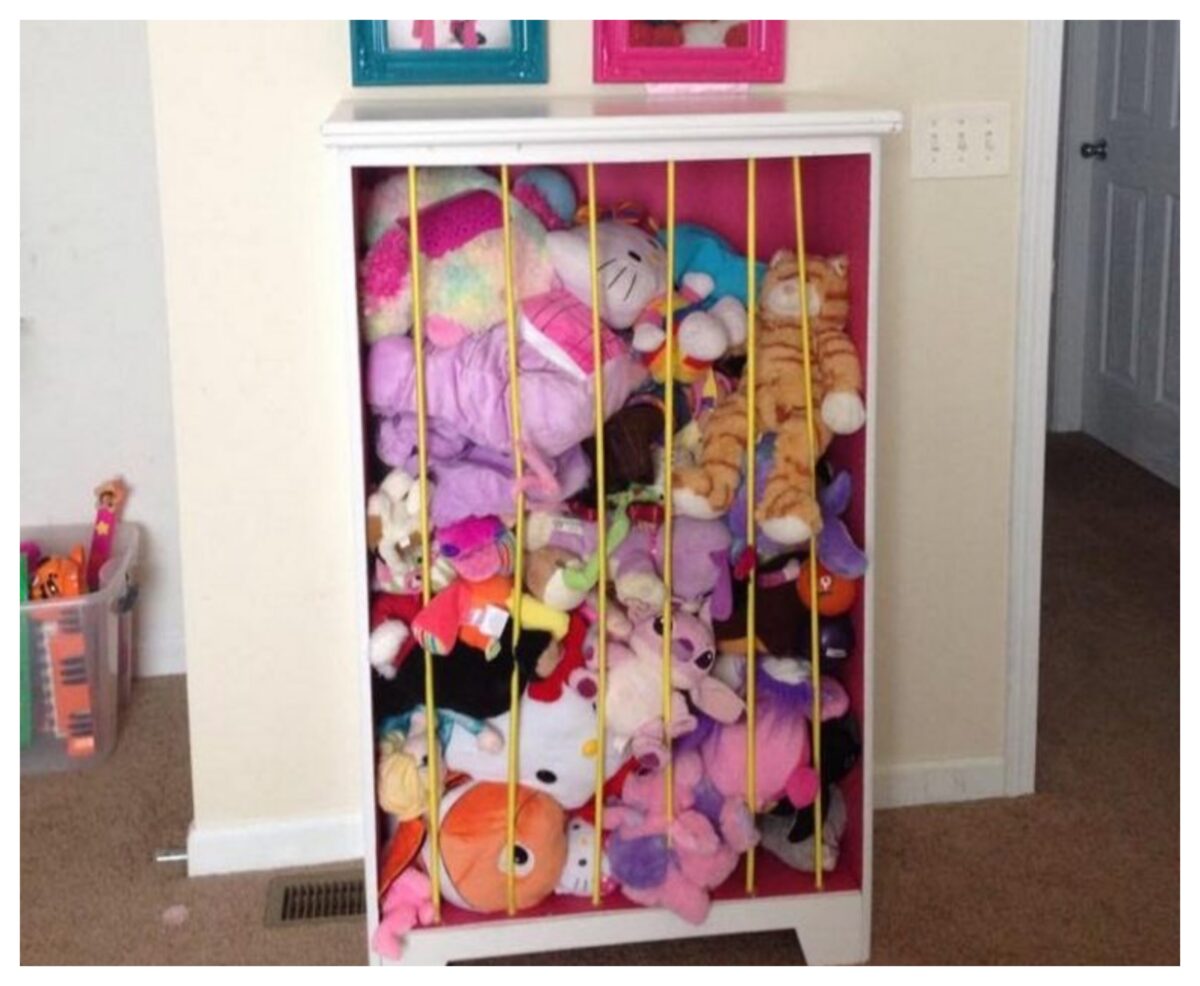
6. Single-layer Animal Zoo Storage
In addition to encouraging independence, this toy zoo will also enhance creativity. The toys will be within reach of your children, so you won’t have to ask them to get them.
Click on any image to start the lightbox display. Use your Esc key to close the lightbox. You can also view the images as a slideshow if you prefer 😎
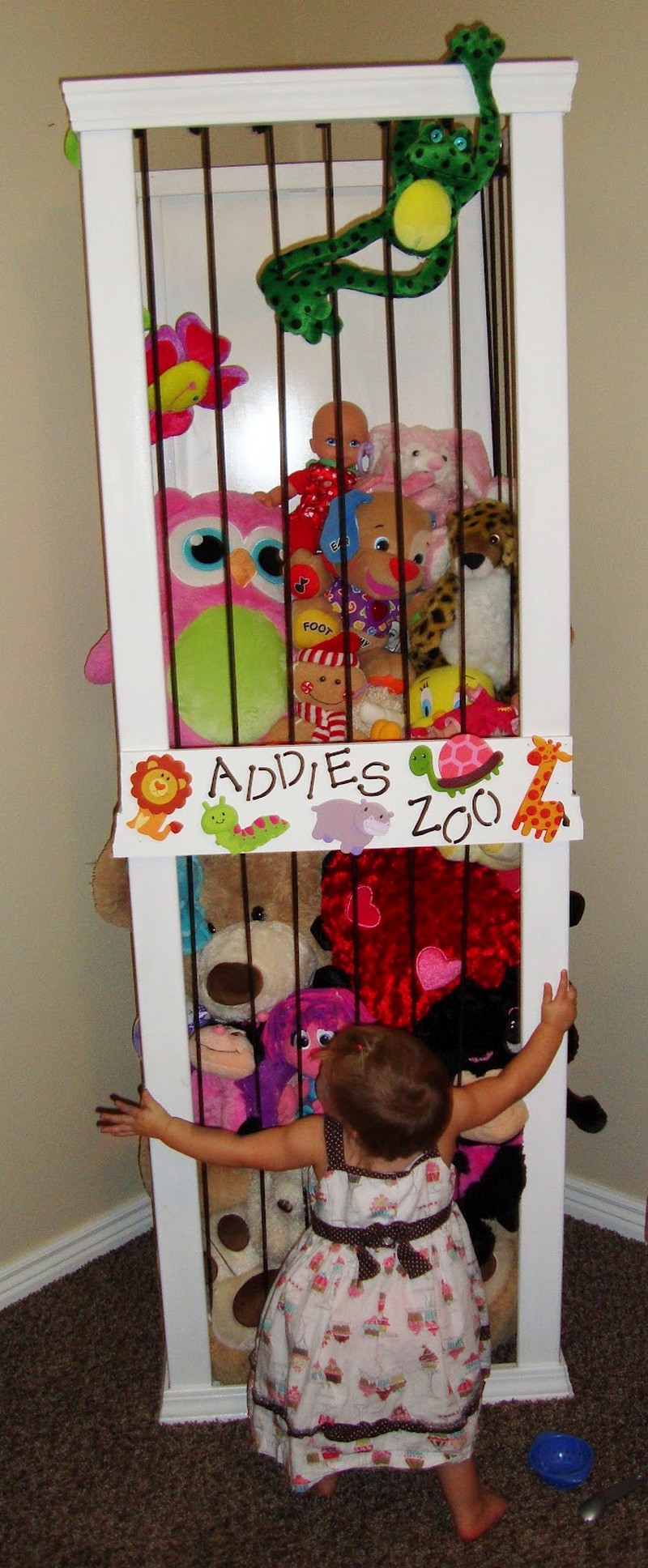
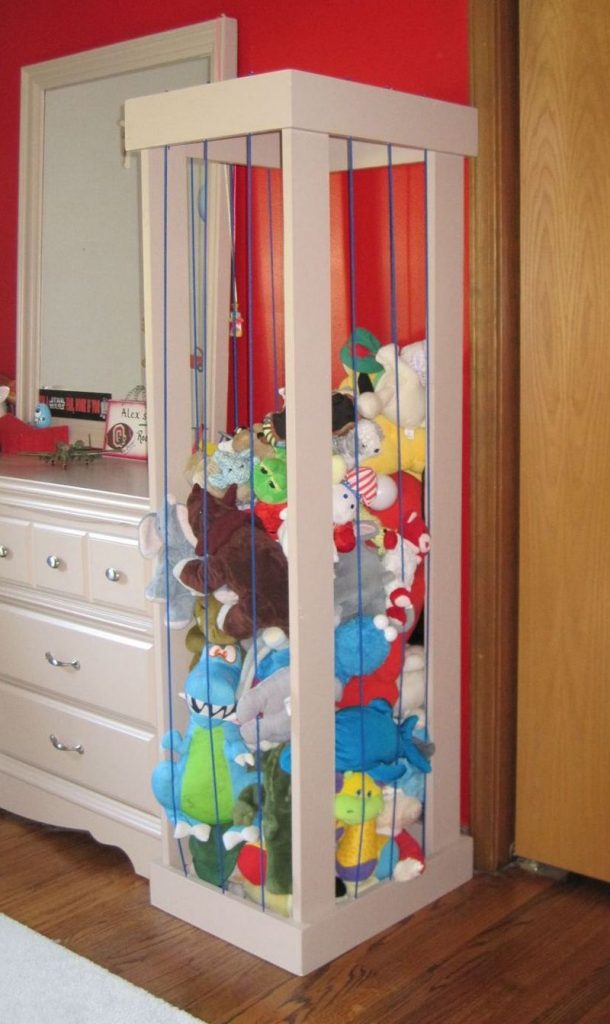
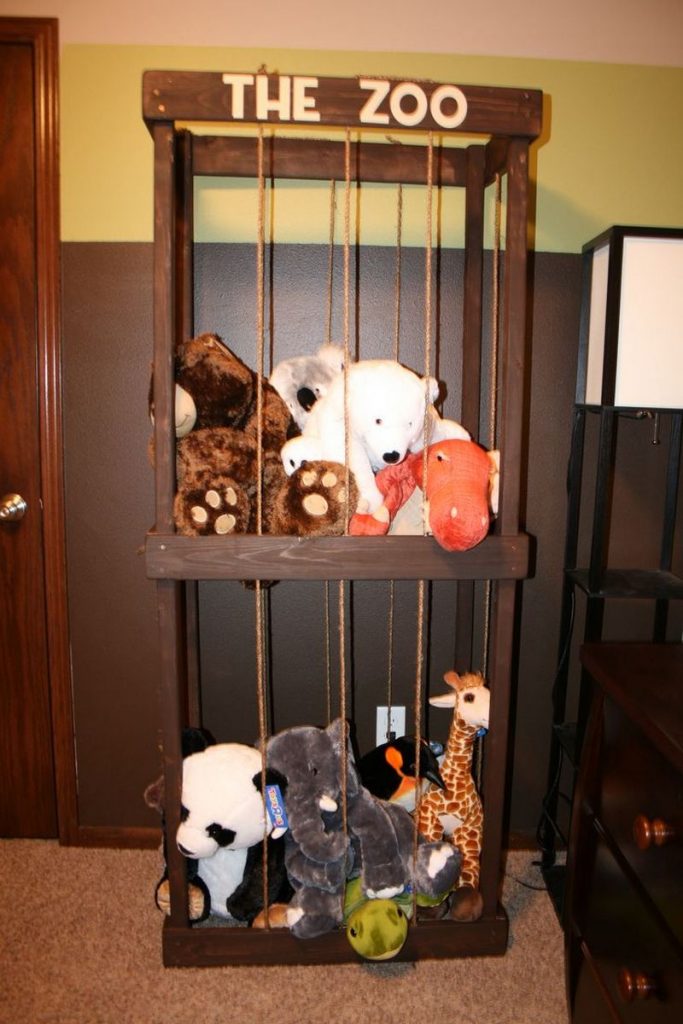
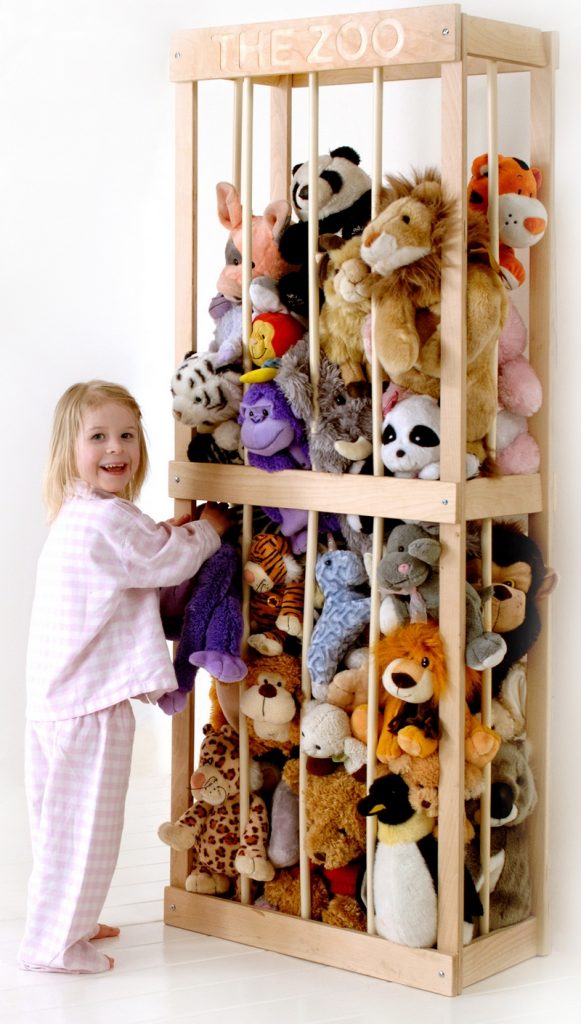
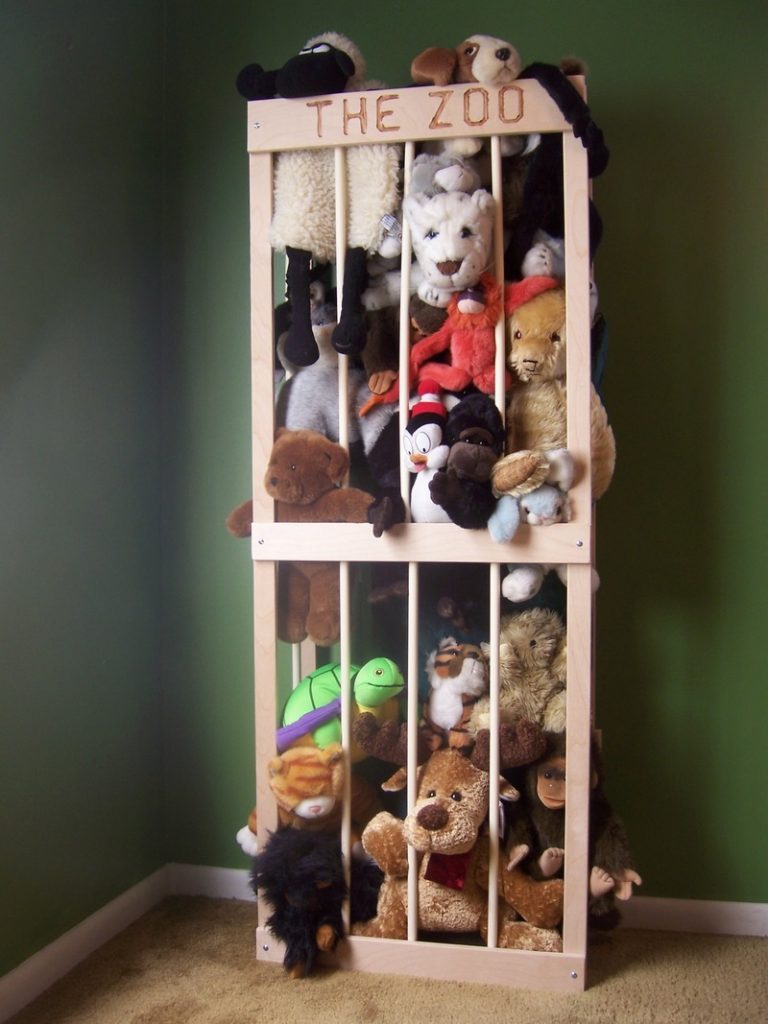

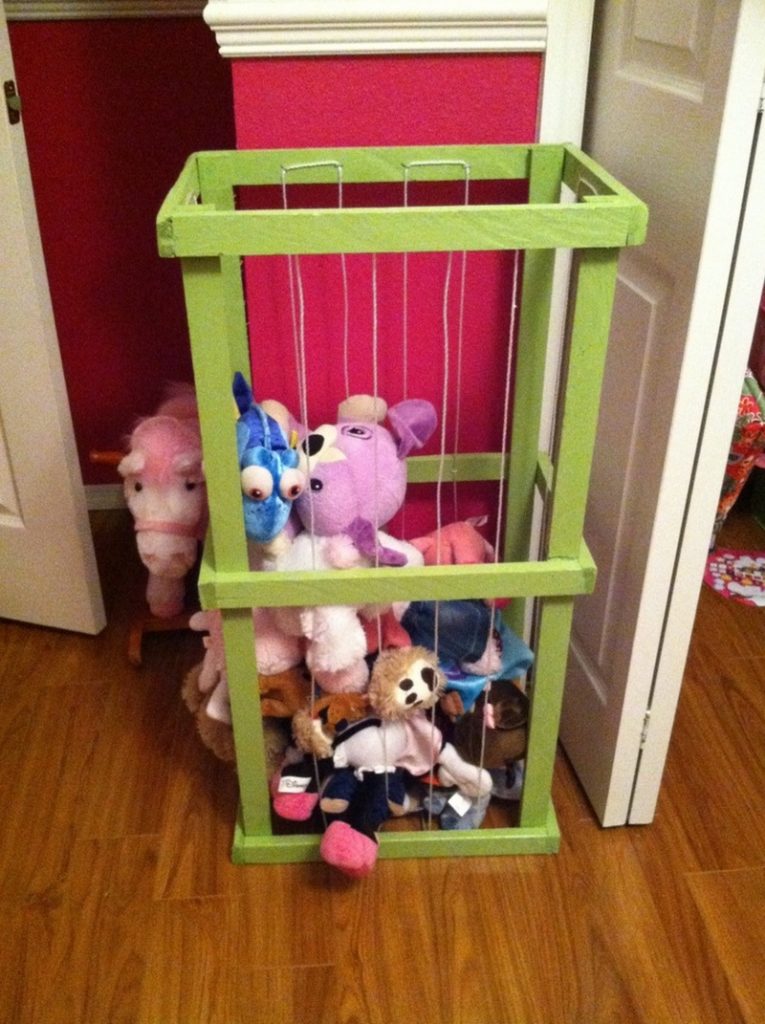
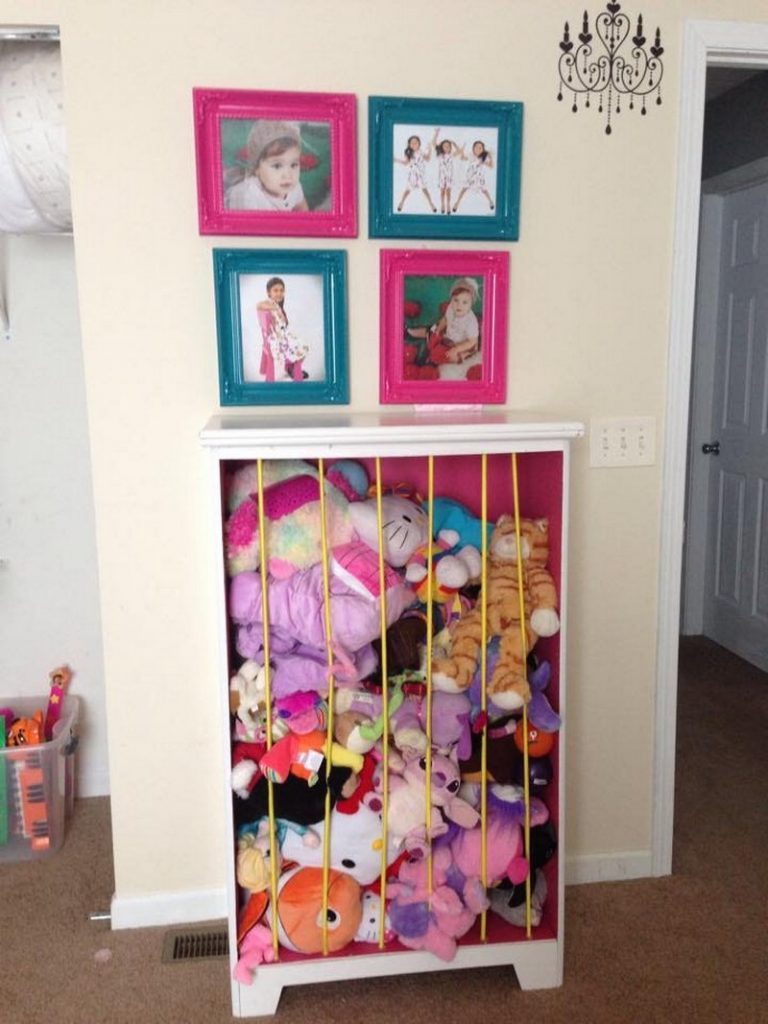
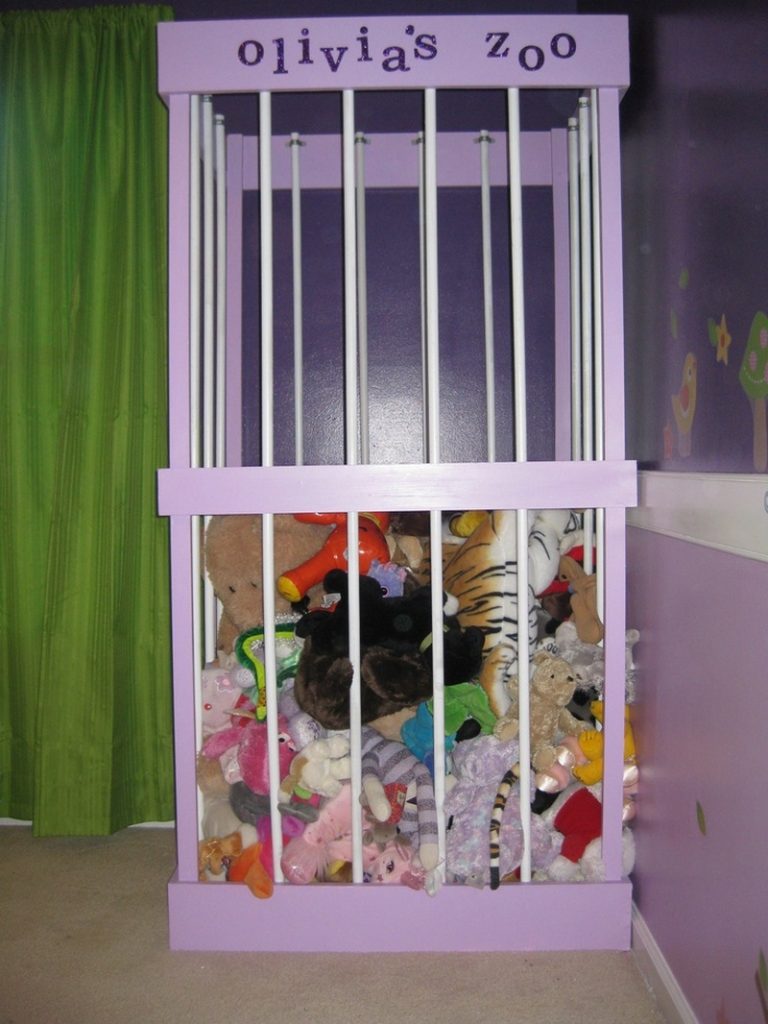

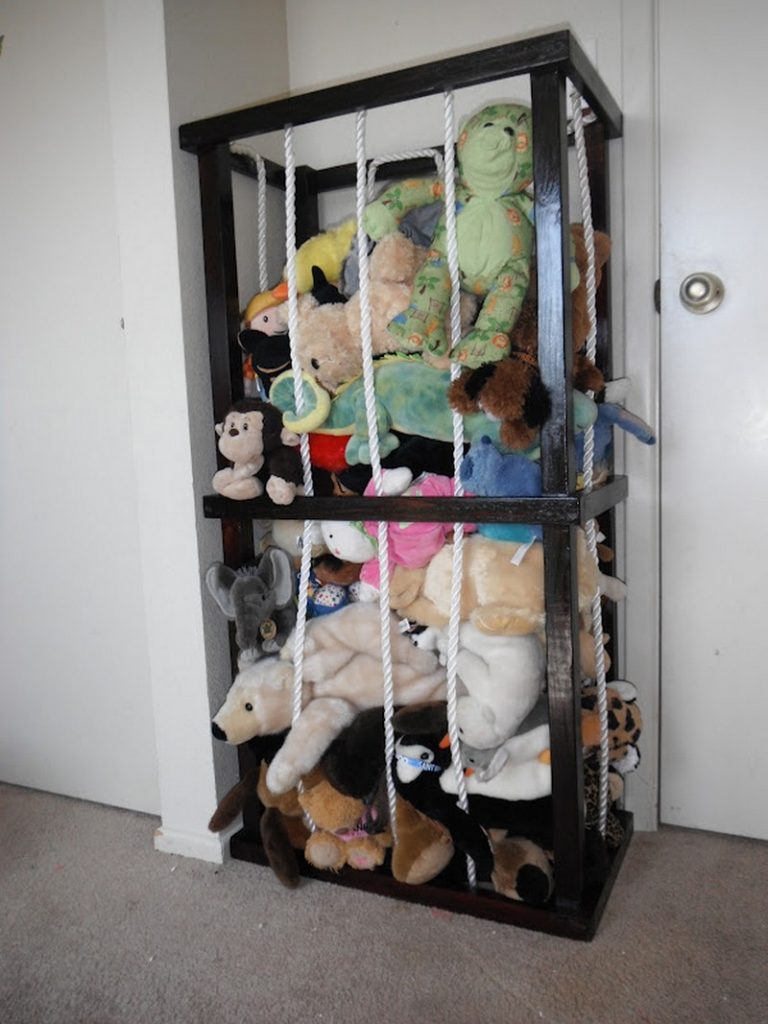
Thanks to The Keeper of Cheerios for this great project. You can get the step-by-step instructions here…
If you liked this project, you will also like viewing these DIY projects for kids…
The Wrap Up
The array of DIY stuffed animal zoo designs presented here embodies a delightful fusion of ingenuity, practicality, and whimsical charm, catering to the creative spirit within both children and adults.
Whether you opt for the nostalgic transformation of a repurposed bookshelf, the whimsy of hanging baskets suspended from the ceiling, or the structural intrigue of tiered displays crafted from crates or PVC pipes, each approach offers a distinctive canvas upon which to paint a captivating sanctuary for your furry friends.
These designs not only serve the practical purpose of organizing stuffed animals but also offer a canvas for personal expression. Infusing your creation with unique touches, such as themed decorations, personalized signage, or colourful fabrics, allows you to fashion a space that reflects your individual style and delights the senses.
Moreover, beyond the mere act of storage, these DIY zoos become vibrant playgrounds for imagination. As children interact with their stuffed animals within these whimsical environments, they are transported to worlds of adventure and wonder, where each plush companion becomes a cherished character in their imaginative narratives.
So, armed with inspiration and creativity, seize the opportunity to embark on the fulfilling journey of bringing your stuffed animal zoo to life. Gather your materials, let your imagination soar, and revel in the joy of crafting a magical space that not only organizes but also ignites the imagination and sparks joy in the hearts of all who enter.
Frequently Asked Questions
1. Why is material selection important in designing a DIY stuffed animal zoo?
Material selection is critical because it determines the safety and suitability of the zoo for users, particularly children. Non-toxic, hypoallergenic materials help prevent allergic reactions and ensure a safe play environment.
2. How can I ensure that the construction of the stuffed animal zoo is secure?
Ensuring secure construction involves using sturdy materials, reinforcing joints and connections, and checking for any sharp edges or protruding parts that could cause injury. Proper anchoring and weight distribution also contribute to stability.
Implementing these measures meticulously ensures that the DIY stuffed animal zoo is secure and safe for use. Regular inspections and maintenance are also essential to address any issues promptly and preserve the long-term integrity of the structure. By prioritizing safety in construction, creators can provide an enjoyable and risk-free play environment for users of all ages.
3. Why is supervision important during the construction and use of the DIY stuffed animal zoo?
Supervision is essential to prevent accidents and ensure that participants, especially children, understand how to use the zoo safely. Educating them about potential hazards and monitoring their activities helps minimize risks.
4. How do you design the stuffed animal zoo to be age-appropriate?
Designing the zoo to be age-appropriate involves considering the developmental level of the intended users and avoiding small parts or intricate features that may be difficult for them to handle. Simplified designs and soft padding can enhance safety for younger children.
By carefully considering the developmental needs of users and implementing age-appropriate design principles, creators can ensure that the stuffed animal zoo is safe, engaging, and accessible for children of all ages. A thoughtful approach to design enhances the overall play experience and fosters a sense of enjoyment and exploration for young users.
5. What are some tips for distributing weight evenly in the stuffed animal zoo?
Distributing weight evenly involves securing heavier items to prevent tipping or instability. Using weighted bases or securing larger stuffed animals can help maintain balance within the zoo.
Incorporate weighted bases to provide additional stability to the stuffed animal zoo, particularly for taller or larger structures. Place weighted objects such as sandbags, bricks, or weighted plates at the base or foundation of the zoo. Position them strategically to evenly distribute the weight and counterbalance any heavy components above.
6. How can I ensure fire safety in the DIY stuffed animal zoo?
Ensuring fire safety includes using battery-operated lights or LED bulbs that emit minimal heat, keeping flammable materials away from heat sources, and following appropriate safety guidelines for electrical components.
Opt for lighting options that minimize the risk of heat generation, such as battery-operated lights or LED bulbs. These alternatives emit minimal heat compared to traditional incandescent bulbs, reducing the likelihood of igniting nearby flammable materials. Additionally, battery-operated lights eliminate the need for electrical wiring, which can pose a fire hazard if not properly installed or maintained.
Keep flammable materials, such as fabrics, papers, or plastics, at a safe distance from heat sources. Ensure that these materials are stored away from lighting fixtures, heaters, or any other devices that generate heat. Regularly inspect the area surrounding heat sources.




